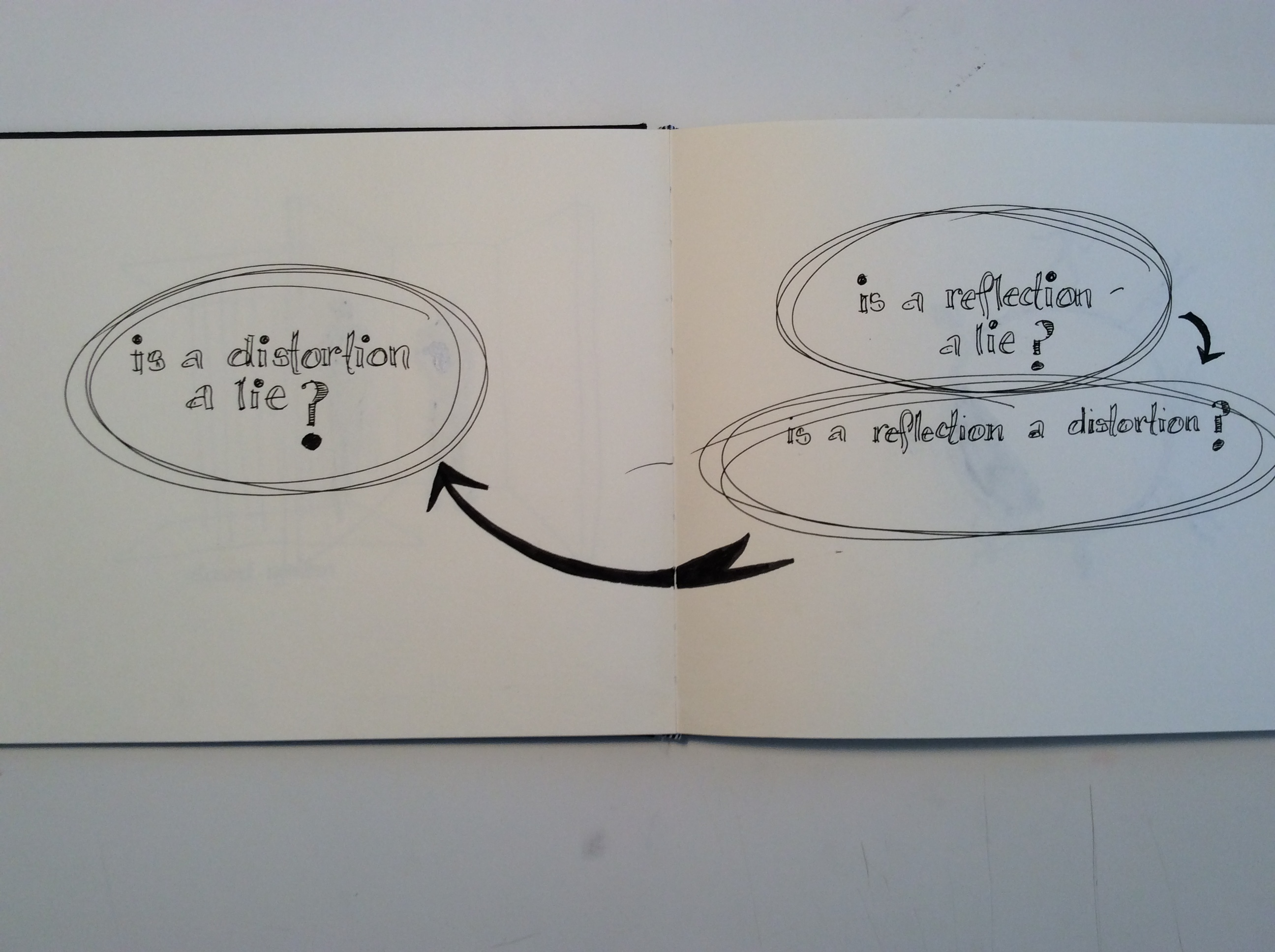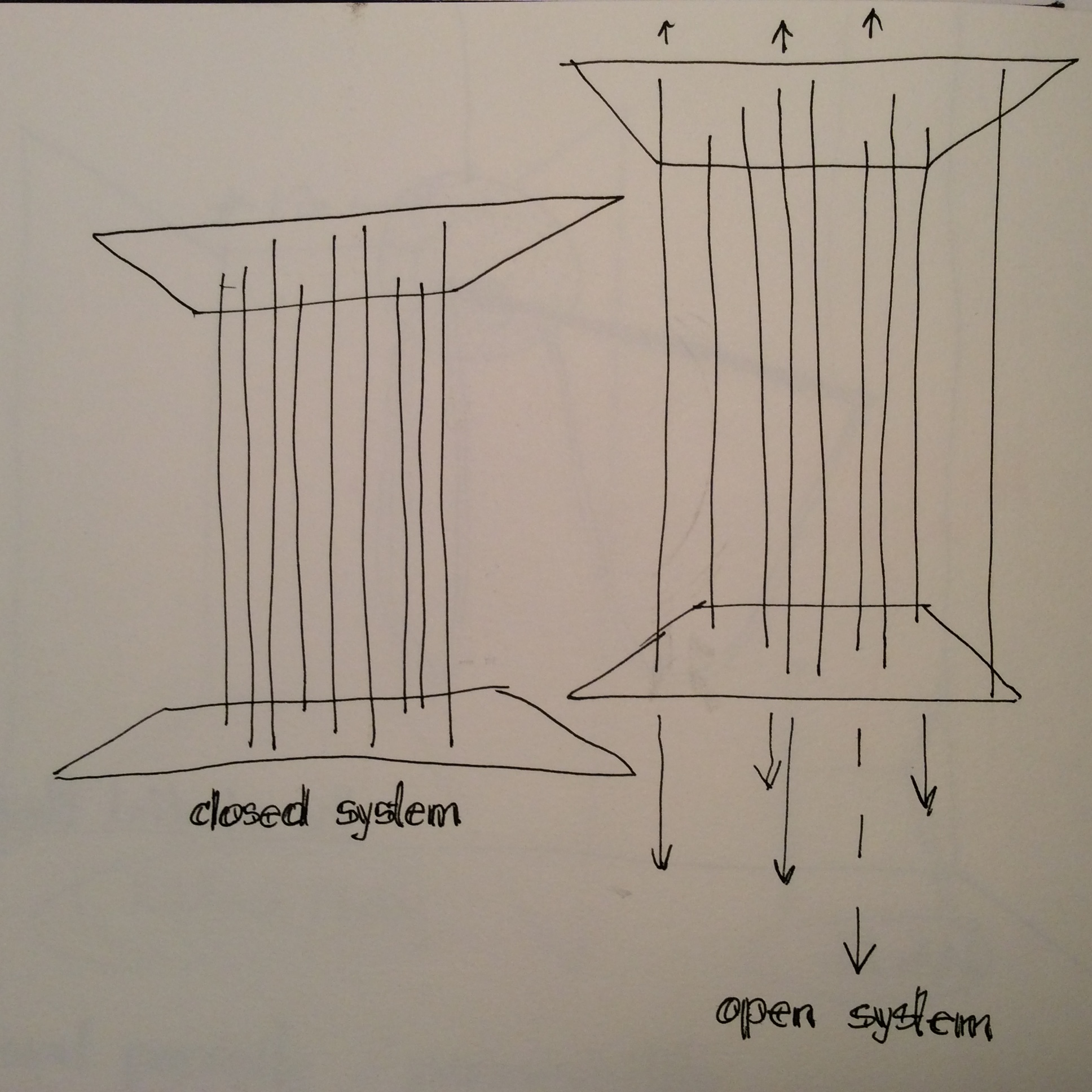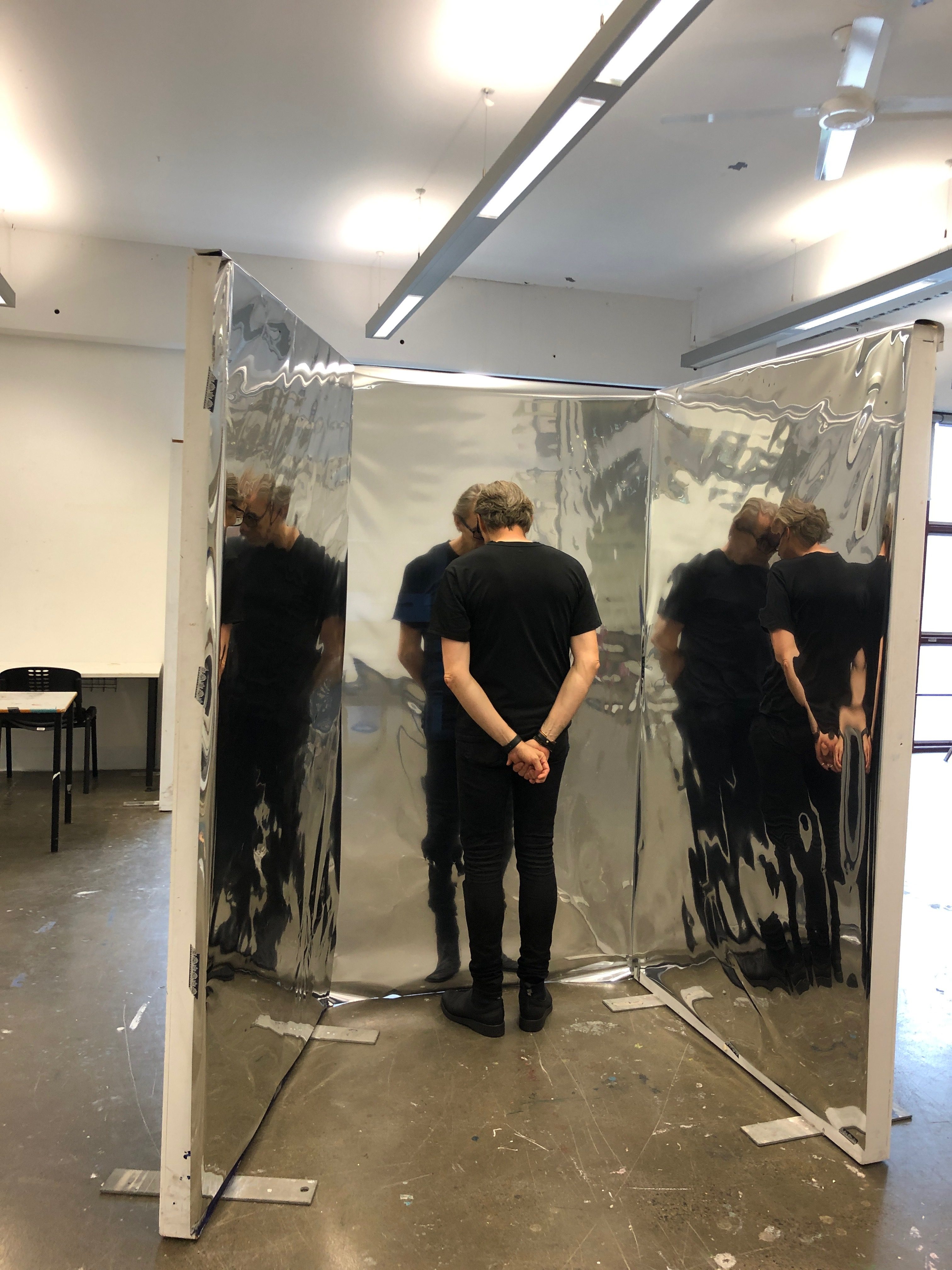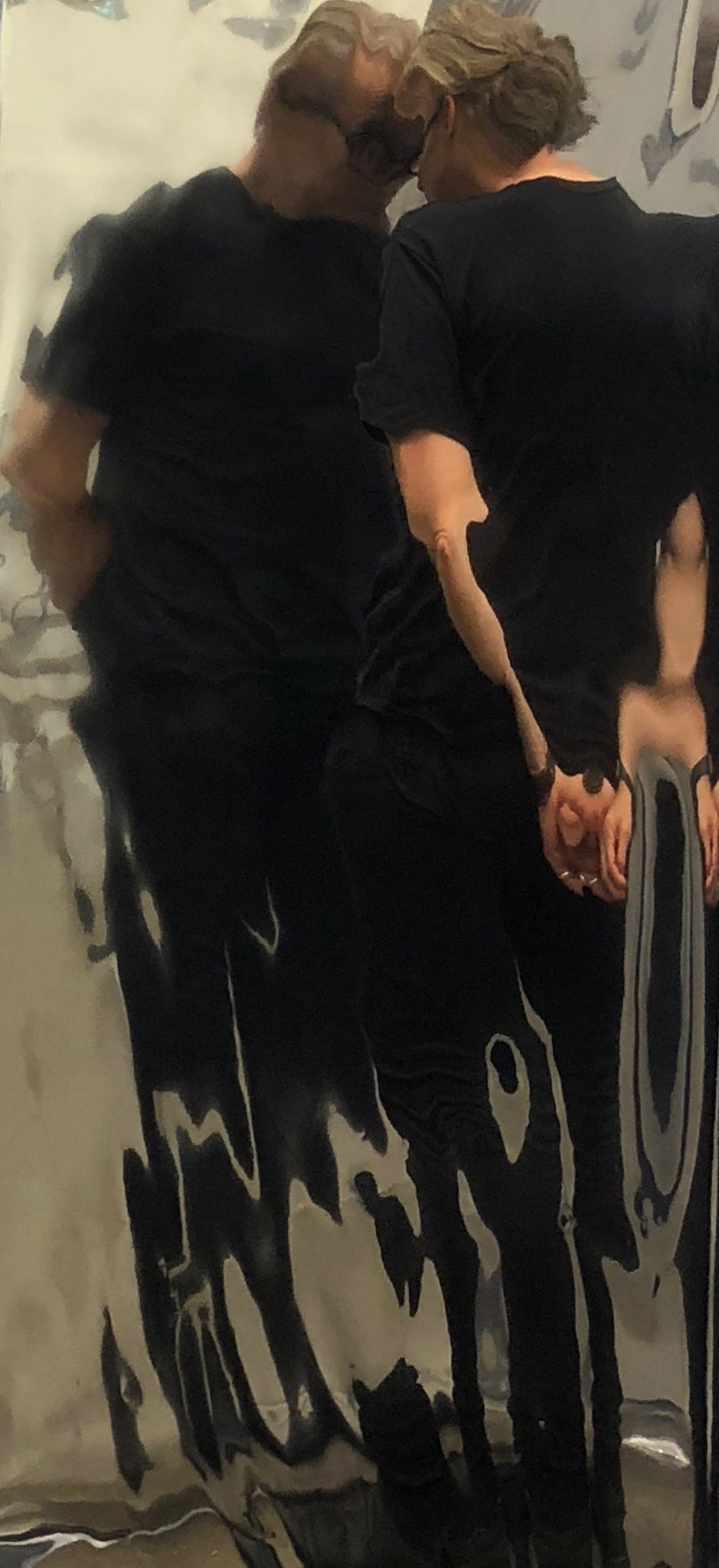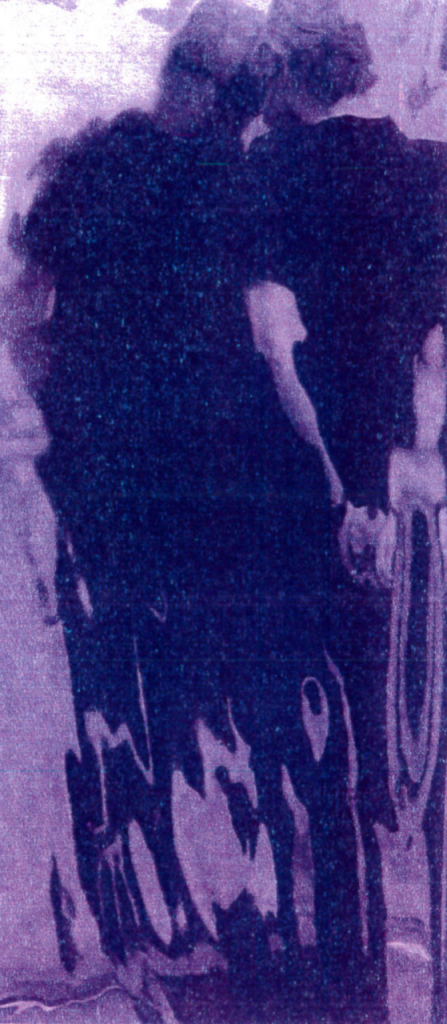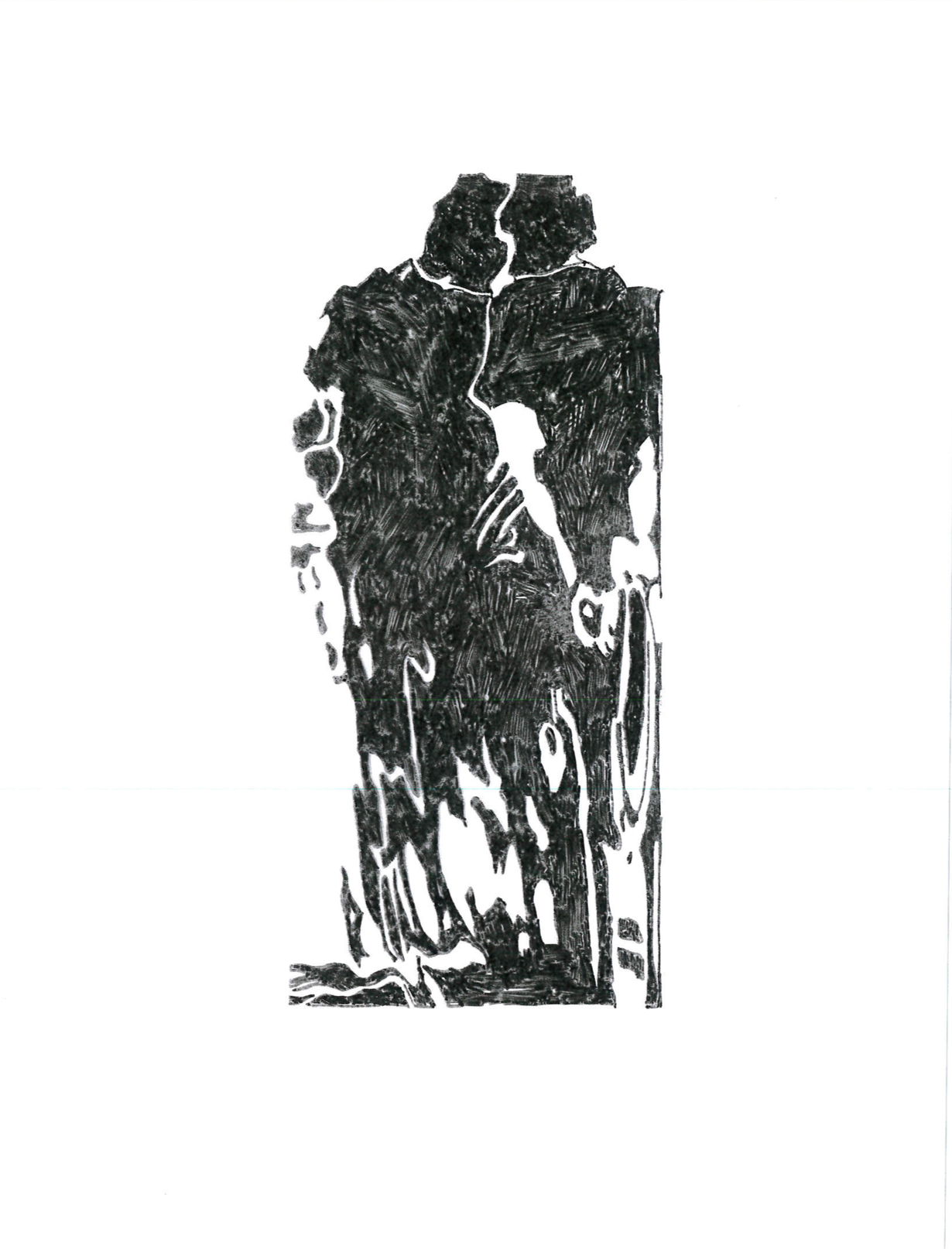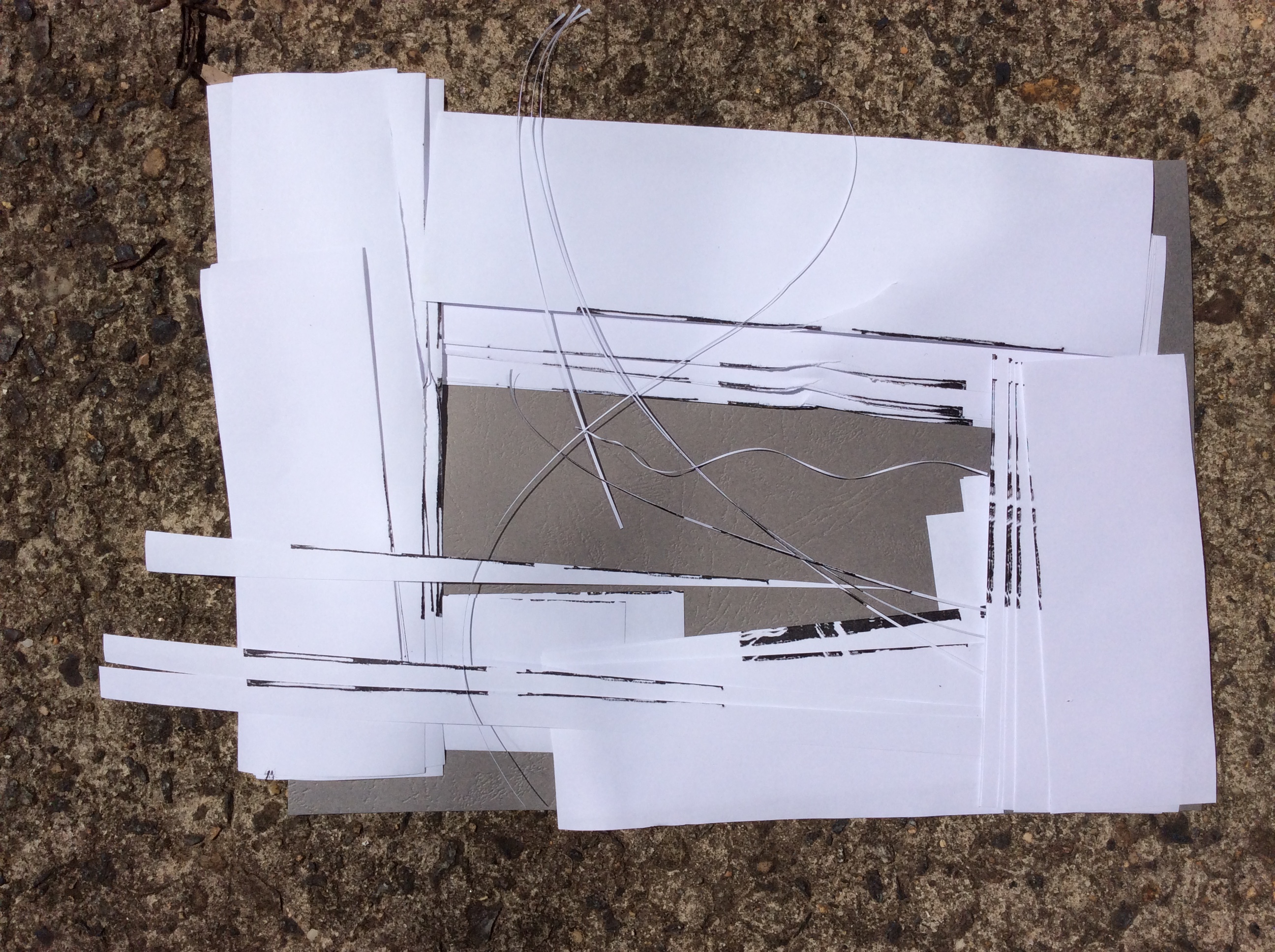SUMMARY / STATEMENT OF MEANING
Open attachment below
STATEMENT OF MEANING EXPERIMENT 2
Approaching Experiment 2, I wanted to explore reflection more deeply. After peering at photographs taken from my solo experimentation as well as further experimentation with other students, I noticed the way there were distorted reflections of reflections of reflections. I wondered how far this could go and still be a recognizable image of the ‘original’…. if there was even such a thing as ‘original’.
What was real and what wasn’t real? Were the reflections visual deceits / lies or truths. Were distortions truth of lie?
Did the distorted image, the ‘transformed reflection’ qualify as a ‘dialogue between the self and the beyond’ in the words of David Rokeby.
If there was indeed a dialogue, what was it saying?
How could I find out?
From Experiment 1 I had noted there was a difference between the images. Some were visually permeable, that is in an ‘open system’ and some were visually impermeable, in a ‘closed system’.
Would this affect the dialogue, and if so, how……?
Now we know there is a big difference between dialogue and monologue. With a dialogue, we are talking with an ‘other’….interacting really, as in true dialogue each side of the conversation is affected by the words spoken by the other in active participation. We all know the monologue, as speaker, or listener the stream is not broken by participation of other….it is a closed loop, or a closed system.
If the loop is closed, there is basically no dialogue with the ‘beyond’…no vision of the world beyond, no opening to grow, to be challenged, to learn, to revise our perceptions of the world we experience.
How could I experiment with this in a visual method?
In noticing an image I took of a colleague in the earlier experiment, I could see multiple reflections of reflections. Perhaps I could mediate this image through another means and multiply the reflection and test where it takes me.?
Sitting at my desk, I printed the particular image and gazed at it for a while to ponder the reflections of reflections….. 🤔 🤔 . I noticed the deterioration of perceived quality / legibility with each generation of reflection.
Perhaps I could push this to a perceived endpoint, and find out what that was.!!!
At that moment I looked across and saw my printer / photocopier and had an aaaaahaaa moment…..this could be the perfect tool to test a perceived endpoint, as a digital photocopier uses light, electrical waves and a mirror in the process of creating an exact copy, or as close as is possible. I was interested in this ‘as close as possible’ as I felt there may be some gold at the end of this if I experimented.
EXPERIMENT 2A
I cropped out the reflected section of the above image as follows:
Then I photocopied it in a variety of single colours, using each copy as the original for the next copy. As you will see below, the image quality degenerated at varying rates with each colour selected. I have prepared and mounted the set in purple, as they gave me more generations than other colours.
Result of the experiment below…………
At the endpoint, there was no identifiable image in the rectangle of the frame (at around 10 generations) . It had degenerated to a rectangle of pretty well plain colour, as you can see below.
First image and last image as follows:
EXPERIMENT 2B.
In testing an alternative, I drew a schematic representation of the image on acetate separating it into solid blocks of black and white.
Then, I copied this using each generation as the original until the image had completely disappeared, (around 10 generated prints to become invisible) as shown in the mounted exhibition of results.
The detail in the photograph disappeared into the background colour of the image, whereas the drawing disappeared into a blank white page of invisibility. The result brought Leina’s work around ‘damage’ to mind, where she had included images that had been obfuscated by damage in some way…..traces of some event or erosion as existing in the present.
Results of the experiment below.
EXPERIMENT 2C.
In looking at the drawn image, I wondered what other tests I could carry out to find a potential vanishing point.
I photocopied 36 copies of the original image and trimmed them down to the drawing alone. Then I mounted the rectangles as tiles on a board to see what happened when they were inverted, and reversed to become a pattern form.
The original drawing became difficult to distinguish, somewhat invisible in the overall level of patternation. It was basically drowned in the pattern which became dominant as shown following:
CONCLUSION
I felt the experiment was successful on many levels as follows:
- a set of prints was generated as an aesthetic result of the experimentation, that directly demonstrated the field of enquiry
- the results were conclusive around dissolution of the original and the journey between visible and invisible
- the results opened up more fields of enquiry and experimentation with medium, process, colour and form
POTENTIAL OF OTHER / FURTHER EXPERIMENTS
I loved the experiment conducted by Natalie which replaced measured water for a clock to provide an alternative method of measuring time. This triggered the potential of other experimental concepts for me…
Subsequent to the development of patternation above, I played with the concept of developing a wallpaper from binary code describing the image, so the patternation of 0s and 1s was a replacement, a code for the image which would in fact become invisible. This concept of transposition / mediation, of exchanging one image for another to describe it, would open other avenues.
I also played with the concept of wallpaper challenging an open / closed system where binary code wallpaper, was used to describe the room which the wall concealed behind.
This concept was also ‘fertilized’ by Gavin’s 100 pages of code for the woodchip image he presented as a description of the thing itself. The fact that code could be used in lieu of the object opened up many possibilities in my work with the open and closed system of the visible and invisible. Various codes could be used such as binary code, braille, plain text code or many other types of code that filter / distill information.
These various approaches open further experimentation of the membrane as selective barrier that allows some things to pass through but, not others.
I felt a huge potential in experimentation which could contribute to the extent of my knowledge around this exploration, as referenced by Darina in her work on ‘depth’.
VISUAL BY-PRODUCTS OF THE EXPERIMENTAL PROCESS…shown below.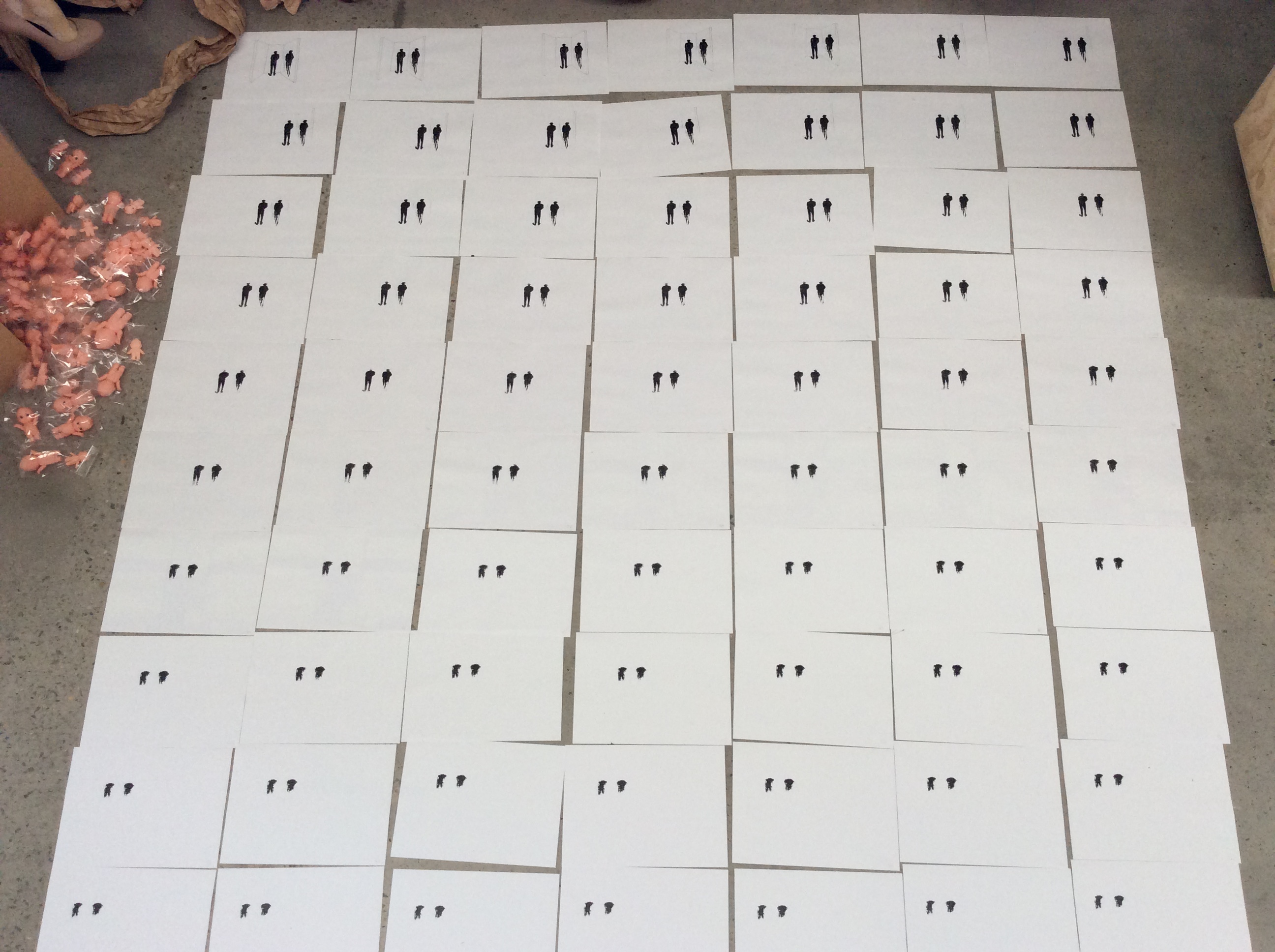
MULTIPLE GENERATIONAL COPIES (70) OF SMALL BLACK AND WHITE DRAWING shown above
AESTHETIC BY-PRODUCT OF EXPERIMENT USING OFFCUTS OF PATTERNATION PROCESS shown below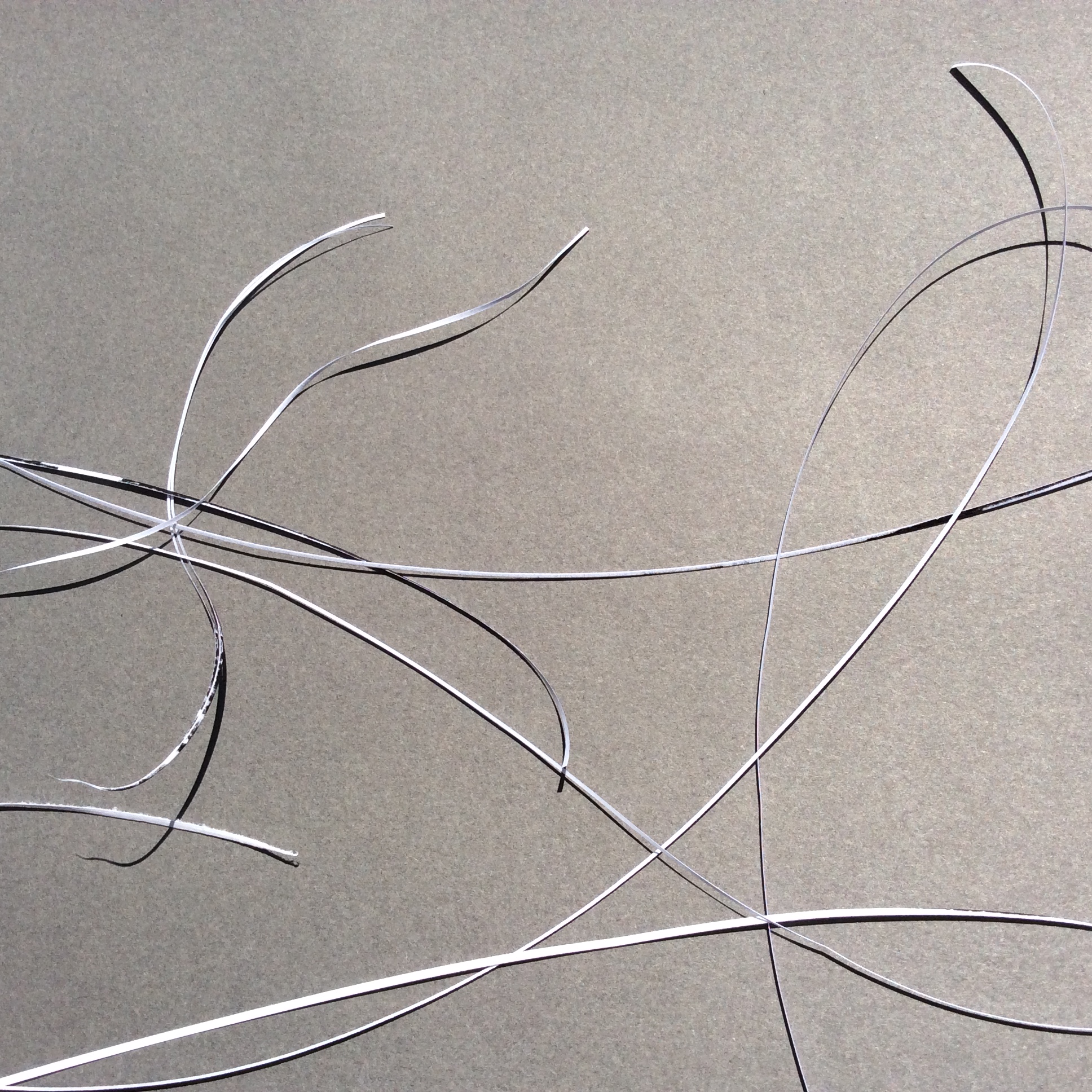
FURTHER OFFCUTS WHICH OPEN UP POTENTIAL OF FURTHER EXPERIMENTATION WITH THE VISIBLE AND THE INVISIBLE shown below
Only the ‘frame of reference’ exists here…. the rest / subject is invisible.
